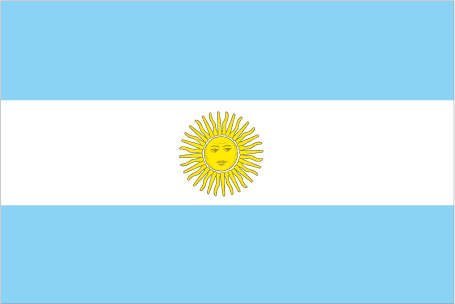
Argentina benefits from rich natural resources, a highly literate population, an export-oriented agricultural sector, and a diversified industrial base. Although one of the world's wealthiest countries 100 years ago, Argentina suffered during most of the 20th century from recurring economic crises, persistent fiscal and current account deficits, high inflation, mounting external debt, and capital flight. A severe depression, growing public and external indebtedness, and an unprecedented bank run culminated in 2001 in the most serious economic, social, and political crisis in the country's turbulent history. Interim President Adolfo RODRIGUEZ SAA declared a default - at the time the largest ever - on the government's foreign debt in December of that year, and abruptly resigned only a few days after taking office. His successor, Eduardo DUHALDE, announced an end to the peso's decade-long 1-to-1 peg to the US dollar in early 2002. The economy bottomed out that year, with real GDP 18% smaller than in 1998 and almost 60% of Argentines under the poverty line. Real GDP rebounded to grow by an average 8.5% annually over the subsequent six years, taking advantage of previously idled industrial capacity and labor, an audacious debt restructuring and reduced debt burden, excellent international financial conditions, and expansionary monetary and fiscal policies. Inflation also increased, however, during the administration of President Nestor KIRCHNER, which responded with price restraints on businesses, as well as export taxes and restraints, and beginning in 2007, with understating inflation data. Cristina FERNANDEZ DE KIRCHNER succeeded her husband as President in late 2007, and the rapid economic growth of previous years began to slow sharply the following year as government policies held back exports and the world economy fell into recession. The economy in 2010 rebounded strongly from the 2009 recession, but has slowed since late 2011 even as the government continued to rely on expansionary fiscal and monetary policies, which have kept inflation in the double digits. The government expanded state intervention in the economy throughout 2012. In May 2012 the Congress approved the nationalization of the oil company YPF from Spain's Repsol. The government expanded formal and informal measures to restrict imports during the year, including a requirement for pre-registration and pre-approval of all imports. In July 2012 the government also further tightened currency controls in an effort to bolster foreign reserves and stem capital flight. During 2013, the government continued with a mix expansionary fiscal and monetary policies and foreign exchange and imports controls to limit the drain in Central Bank foreign reserves, which nevertheless dropped US $12 billion during the year. GDP grew 3% and inflation remained steady at 25%, according to private estimates. In October 2013, the government settled long-standing international arbitral disputes (including with three US firms) dating back to before and following the 2002 Argentine financial crisis. In early 2014, the government embraced a series of more orthodox economic policies. It devalued the peso 20%, substantially tightened monetary and fiscal policies, and took measures to mend ties with the international financial community, including: engaging with the IMF to improve its economic data reporting, reaching a compensation agreement with Repsol for the expropriation of YPF, and presenting a proposal to pay its arrears to the Paris Club.
$771 billion (2013 est.)
country comparison to the world: 23
$745.2 billion (2012 est.)
$731.3 billion (2011 est.)
3.5% (2013 est.)
country comparison to the world: 95
1.9% (2012 est.)
8.9% (2011 est.)
$18,600 (2013 est.)
country comparison to the world: 75
$18,200 (2012 est.)
$18,000 (2011 est.)
agriculture: 9.3%
industry: 29.7%
services: 61% (2013 est.)
30%
20.8% (2013 est.)
country comparison to the world: 218
25.3% (2012 est.)
17.32 million
country comparison to the world: 36
note: urban areas only (2013 est.)
agriculture: 5%
industry: 23%
services: 72% (2009 est.)
7.5% (2013 est.)
country comparison to the world: 82 7.2% (2012 est.)
food processing, motor vehicles, consumer durables, textiles, chemicals and petrochemicals, printing, metallurgy, steel
2.7%
country comparison to the world: 112
note: based on private sector estimates (2013 est.)